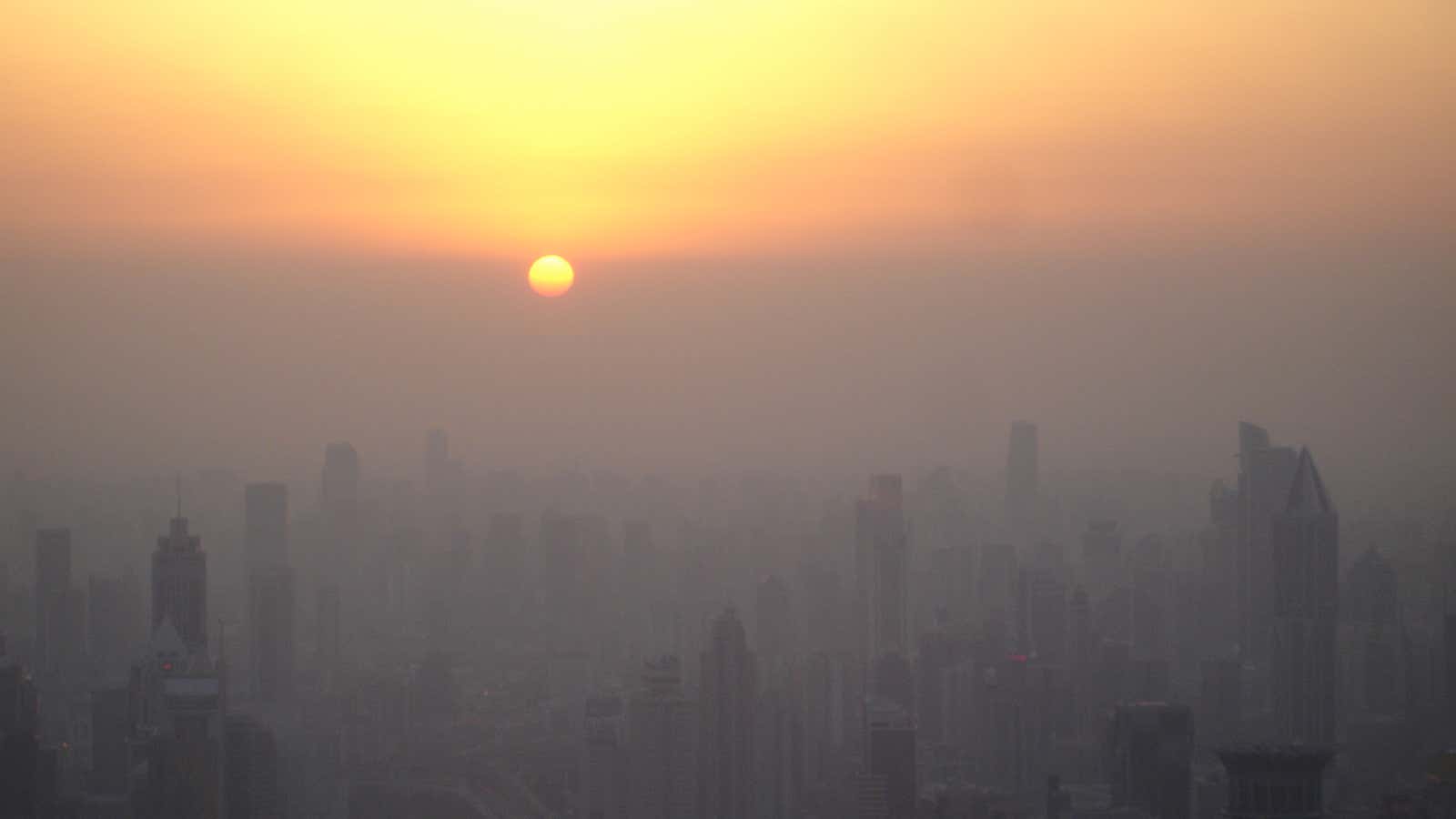If you are one of the 3.9 billion people around the world living in a city, the air in your lungs is very likely hurting you, according to the World Health Organization’s (WHO) latest report. More than 80% of those who live in cities with more than 100,000 that monitor air pollution are exposed to air quality levels that exceed WHO limits, according to the latest Global Urban Ambient Air Pollution report.
The report showed a dramatic difference between wealthier and poorer cities. Ninety-eight percent of cities in low- and middle-income countries have heavily polluted air, while 56% of cities in high income countries do, according to WHO.
WHO collects information about air quality on an ongoing basis from 3,000 cities around the world with populations of over 100,000. It also sets air quality guidelines to help cities understand the implications of their level of air pollution and take action. These guidelines are based on levels of small and fine particulate matter, air pollutants that pose health problems and the risk of premature death from lung cancer, asthma, and other diseases. A recent study found that air pollution was in part to blame to 5.5 million deaths each year.
Over 54% of the world’s population lives in urban areas, according to a 2014 report by the United Nations. This number is expected to rise 66% by 2050, so urban air quality is a pressing issue for governments around the world. WHO points out that most air pollution is not caused by the actions of individuals, so air quality control is an issue of government regulation.
The good news: When governments step up and take responsibility, cities can increase their air quality relatively quickly. More than 50% of the cities in high-income countries and more than 33% of the cities in low- and middle-income countries monitored by WHO reduced their air pollution levels by more than 5% in five years, the report shows.
Cities in low-income countries in the eastern Mediterranean and southeast Asian regions have the worst air, according to WHO, with air pollution levels exceeding five to 10 times the organization’s limits. Cities in low-income countries in the Western Pacific Region came in second to last. Levels of urban air pollution in these cities has increased by more than 5% in the past five years, according to the report. Air pollution in many African cities was also above the median level, though WHO notes that it does not have as much data for this region as the others.
Below, a selection of big cities around the world are organized by two types of particulate matter (small particulate, or PM10, and fine particulate, or PM2.5) found in their air. Cities with PM10 levels above 20 µg/m3 exceed WHO air quality recommendations.
While big cities have the worst air quality overall, cities with the highest levels of air pollution are not always the biggest. Onitsha, a Nigerian city with a population of 350,000, tops the list in this WHO report, with a PM10 measure of 594. It is followed by Peshawar, Pakistan, and Zabol, Iran. Heavy industry is likely to blame for the high level of air pollution in provincial cities and towns.
